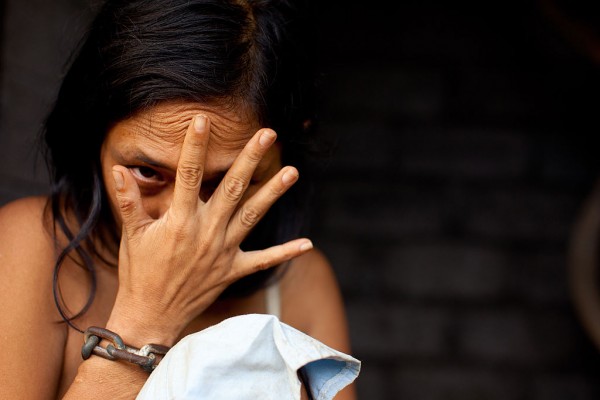China, India Deal With Growing Burden of Untreated Mental Problems
| Charissa Echavez | | May 19, 2016 11:48 AM EDT |
(Photo : Getty Images) Komang, 27, who is diagnosed with Schizophrenia, sits in her room where she is chained May 4, 2012 in Buleleng, Bali, Indonesia.
A recent study has revealed that a third of the growing global burden of mental illness are in two of the world's most populous countries - China and India, where millions of individuals are left untreated because of stigma and lack of resources.
According to the study published in Lancet, only about 6six percent of the people in China or one in every ten individuals suffering from mental diseases seek medical help from professionals.
Like Us on Facebook
"India and China together... are at a remarkable stage of epidemiologic and demographic transition," Dr. Vikram Patek, a professor of international mental health, said.
With less than one percent of the national budget being allocated for mental health care in both countries, factors such as the inadequate number of mental health professionals, poor access to mental health services, low investment, and high level of stigma are hindering people from receiving specialist help.
"We manage an astonishing degree of disregard in not treating a large majority of people with mental illnesses in every country on earth," Graham Thornicroft from the Global Mental Health at King's College London said. He noted that government must be able to discern not only the direct impact of mental diseases but also its indirect effect on people's lives.
"I think politicians and service planners will find this research valuable," Dr. Alex Cohen from the London School of Hygiene and Tropical Medicine, said. "But if you don't have resources to treat more than 2 percent of the people who need it," then the burden could be greater.
Meanwhile, researcher Fiona J Charlson also revealed the growing dilemma that both countries face over a 13-year timeframe. She noted that "mental, neurological and substance use disorders" accounted for seven percent and three percent of the Chinese and Indian population, respectively, in 1990. The figures climbed to 11 percent and six percent, respectively, in 2013.
If left undealt with, the numbers could rose over the next decade. Researchers predict cases will increase by ten percent in China and 23 percent in India.
For the first time, the United Nations (UN) is acknowledging the emerging issue of mental health as a global priority. The UN is now developing a way to measure mental health and to improve it in the next 15 years.
Tagschina, India, mental health, mental healthcare, depression, substance abuse, anxiety
©2015 Chinatopix All rights reserved. Do not reproduce without permission
EDITOR'S PICKS
-

Did the Trump administration just announce plans for a trade war with ‘hostile’ China and Russia?
-

US Senate passes Taiwan travel bill slammed by China
-

As Yan Sihong’s family grieves, here are other Chinese students who went missing abroad. Some have never been found
-

Beijing blasts Western critics who ‘smear China’ with the term sharp power
-

China Envoy Seeks to Defuse Tensions With U.S. as a Trade War Brews
-

Singapore's Deputy PM Provides Bitcoin Vote of Confidence Amid China's Blanket Bans
-

China warns investors over risks in overseas virtual currency trading
-

Chinese government most trustworthy: survey
-

Kashima Antlers On Course For Back-To-Back Titles
MOST POPULAR
LATEST NEWS
Zhou Yongkang: China's Former Security Chief Sentenced to Life in Prison

China's former Chief of the Ministry of Public Security, Zhou Yongkang, has been given a life sentence after he was found guilty of abusing his office, bribery and deliberately ... Full Article
TRENDING STORY

China Pork Prices Expected to Stabilize As The Supplies Recover

Elephone P9000 Smartphone is now on Sale on Amazon India

There's a Big Chance Cliffhangers Won't Still Be Resolved When Grey's Anatomy Season 13 Returns

Supreme Court Ruled on Samsung vs Apple Dispute for Patent Infringement

Microsoft Surface Pro 5 Rumors and Release Date: What is the Latest?














